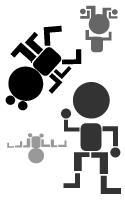
| Solutions |
The best solution is rarely the first solution.
In fact, it is often an amalgam of several ideas. |
mPath Exploring the Design Space
It is helpful to establish a design message to act as a mantra for the project. For mPath, our design message proved an important touchstone to keep us on track. Whenever we felt like we were wandering off our mission, the question could be asked: "Are we walking with them, not for them?"Once a problem is identified, the accumulated research and insights are combined in different ways. This creates small, focused areas of concern — design spaces — to explore. The definition of such spaces is crucial to the creative process. By establishing constraints, the designer will be able to ground new ideas in a real need.
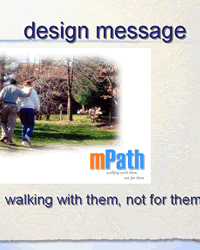
Mutual Politics Prototype
Concepts with any merit can be evolve into prototypes of a wide range of quality. Paper prototypes — which include at the most basic task flow diagrams and wireframes — are low-fidelity versions of the conceived system. Their value lies in the unfinished nature and disposability when drastic changes are needed. High-fidelity prototypes, such as Flash and web mockups, place more premium on accurately simulating the intended user experience. For this project, the core activity was PoliticWiki, a participatory design project using a configured wiki engine and and very simple instructions for a collaborative task. Following the six-month study, wiki skins were used to change the appearance and content of the web site and solicit feedback.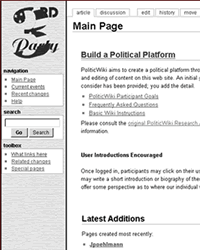
Inner Child Usability
An initial computer game was needed to accompany the Brainchild block interfaces that would replace the traditional mouse. Observations of young children indicated that simple toys were being combined and appropriated to feed complex storytelling. Our early concepts centered around the notion that kids use their imaginations during play to create their own narrative. We used a paper prototype to test our game ideas by asking young learners to select two cards among several depicting core components. A new creature would result, allowing the children to explore the properties that changed as a result of their actions. Through these studies, we learned that our game was wildly popular and engaging yet too complex to be fully understood by this age group.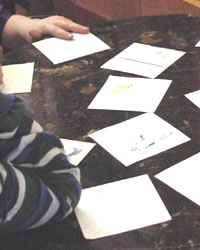
Mutual Politics Simulation & Modeling
Complex Adaptive Systems (CAS) simulate interactions between agents and an environment to predict long-term behavior. Relying on simple interaction rules and local strategies for each agent, CAS tries to reveal the emergent properties of a system. I examined political discussion in this way, with an application built from NetLogo tools. In the agent-based model created for this project, the computer environment was littered with conversation spaces and different types of authors. Each author had to follow simple rules to successfully publish new content, and that content had the effect of keeping the conversation alive. What was learned from this design exercise is that some initial density of willing participants required to get a conversation into a sustainable mode.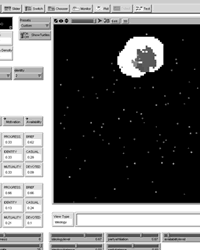
Brainstorm Video Prototype
Video prototyping is an established technique in the HCI community. It is used during pre-implementation of a concept in the design process, with the intent to help potential users, clients and even the designers understand the context of a system in use. For Brainstorm, the video prototype told a story of two museum visitors exploring a new exhibit on story composition. Each visitor takes a different journey through the six stations, illustrating at a high level the function of the design. The quality of the set, props, acting and costumes is largely irrelevant and often interferes with the core goal of a video prototype: to understand the use of a design and its potential impact on the world. Brainstorm Video Prototype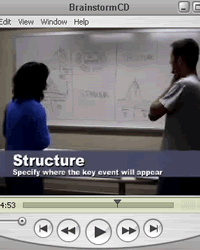
mPath Concepts
The final solution is rarely the first solution. Even if a designer were to get that lucky, a full exploration of the design space is warranted to improve the strength of such decisions. With mPath, our initial direction focused on improving web interfaces to make them easy for senior citizens to use. We branched out to other communication channels, such as kiosks, PDAs, computer tablets, ATM machines, and set-top television boxes. We developed preliminary reasoning for a new computer operating system for seniors; GPS medical alerts to improve emergency response time; a device to remotely play a game of cards; and a family tree wizard that made sharing of personal history simple. Social networking concepts ultimately guided our design.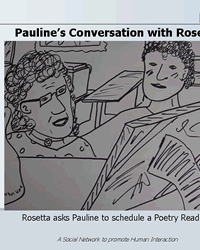
The Power of Gangs Sketching
If a picture is worth a thousand words, a sketch is the outline of the first draft. Spatial relationships imply meaning that may be difficult to describe in prose. Sketching puts ideas into a tangible form that can aid in communication and later iteration. There was a lot of sketching during my design research of gangs and technology. Most of it centered around understanding the stakeholders involved in this complicated network of social capital. I used sketching to help identify gaps in my knowledge and step away from the default mantra: "Gangs are bad." Labels limit access to the individuals, and sketching helped guide my design to examine more perspectives on the situation.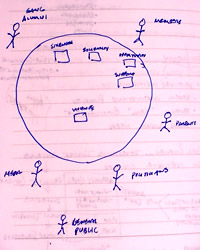
|
4306 East 10th Street | Bloomington, Indiana 47408 | 812.360.2557 |
k m a k i c e @ i n d i a n a . e d u
|